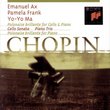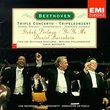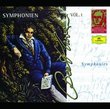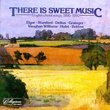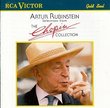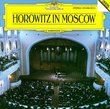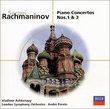| All Artists: Gustav Mahler, Simon Rattle, Berlin Philharmonic Orchestra Title: Mahler: Symphony No. 9 Members Wishing: 0 Total Copies: 0 Label: EMI Classics Original Release Date: 1/1/2008 Re-Release Date: 3/11/2008 Genre: Classical Style: Symphonies Number of Discs: 2 SwapaCD Credits: 2 UPCs: 400000005607, 5099950122820 |
Search - Gustav Mahler, Simon Rattle, Berlin Philharmonic Orchestra :: Mahler: Symphony No. 9
 | Gustav Mahler, Simon Rattle, Berlin Philharmonic Orchestra Mahler: Symphony No. 9 Genre: Classical
|
Larger Image |
CD DetailsSimilarly Requested CDs |
CD ReviewsMuch better than Rattle's Vienna 9th B. Guerrero | 03/12/2008 (5 out of 5 stars) "I've been teetering as to whether this rate this 4 or 5 stars. What pushed me on to five stars, was the simple fact that EMI is selling this as a "twofer" - two discs for the price of one. Sorry to base it upon such a practical issue, but I'm afraid that it really did come down to that for me. As for the performance itself, my feelings lie somewhere between Tony Duggan's "stand up and cheer" rave review at The Mahler-list, and Dave Hurwitz's 7/7 dismissal at Classicstoday.com. That said, I too noticed the same exact drawbacks as Mr. Hurwitz did. I just don't feel that these shortcomings are severe enough to denigrate the recording as whole. Then again, I'm rarely thrilled with the sound on these Rattle/Berlin ventures. In this case, the sound strikes me as being a bit better than usual from this team. As for specific drawbacks, I see mainly two. In the first movement, as Hurwitz points out, the main climax needs stronger low brass, as well as a stronger whack on the big gong. Karajan gets the gong part right (as well as the "flames of hell" rising from the dissonant low "A" in the ((french)) horns), while Giulini gets his Chicago low brass to hammer the movement's main rhythmic motif with the greatest possible force - just as Mahler indicates. Other than that, Rattle's first movement strikes me as being far superior to his earlier Vienna one - a badly balanced recording in general. My other complaint has to do with the Rondo-Burlesque. As Hurwitz again pointed out, the R-B's contrasting central episode is quick to the point of rushing. But more bothersome to my ears, is the fact that Rattle's initial tempo for the R-B isn't that much quicker. In other words, there isn't a lot of contrast - tempo wise - between the main body, and the much need respite of that central interlude. For me, a wee sense of tedium sets in just before the central episode comes to its rescue. Perhaps that was Rattle's point from the start, I don't know. Regardless, I certainly have no complaints about the string playing in the finale, made better by Rattle's natural flow for the bulk of it. That said, I too noticed the two very same small shortcomings that Hurwitz points out: the violas are a tad too loud with their final triplet figure near the end of the symphony, and Rattle begins to fade before the harmony is fully resolved at the end. These are small points, to be sure - but noticeable. Coming back to the big picture, here's the bottom line: if you're strongly curious, get it - EMI priced it as one disc. If you already own one of the Berlin Phil.'s many fine recordings of the Mahler 9th - the one Mahler symphony that they ALWAYS do very well - you really don't need to jump ship. I think that Karajan does a better job of nailing the major climaxes in the two outer movements. But Rattle is better in a number of smaller details, in spite of the negative ones pointed out. The Abbado one is perfectly fine for those who prefer their Mahler 9th to fit on one disc. And let's not forget an old favorite: the Barbirolli M9 from the middle 60's (it always struck me as a bit too soft-edged for this particular work, but it's fine none the less). As for EMI, I simply can't understand why they didn't want to hold off issuing their Simon Rattle complete Mahler symphonies box set, in order to include this obviously superior performance and recording. Go figure! " Virtuoso orchestral playing held in check by Sir Simon Rattl Pater Ecstaticus | Norway | 03/25/2008 (5 out of 5 stars) "Everyone has her or his own personal favorite recordings of Mahler's Ninth Symphony, stemming from expectations of how the music 'should' be played or what 'emotions' one should experience when listening to this music (even aside from the matter of staying as 'true to the score' as possible). I, for one, am very much in favour of a great deal of raw emotionality with this music, even if that means that sometimes the balances are becoming 'askew' as a result. But of course the balances don't have to be askew to get raw emotionality: I personally love Benjamin Zander's fantastically 'lean' and fresh but deeply inspired (and deeply inspiring) recording for Telarc, which is balanced in such a way as to subtely accentuate all of the different instrument groups. But I am also in favour of the wild abandon and 'gigantic' sound of Sir Simon Rattle's first commercial recording with Wiener Philharmoniker, however 'askew' (rather deep, resonant bass, and on the whole sounding rather distantly recorded) the balances may be. (Well, so much for personal tastes; I hope the reader is not too much offended by mine, which may be a bit eclectic ;-) The following are my thoughts about this recording after listening to it for the first one or two times (and also taking into account the remarks by other reviewers, and testing them to what I have heard myself). This new recording of Mahler's Ninth Symphony is, to my ears, characterized by finely balanced playing and recorded sound, exquisitely virtuosic, generally more 'comfortable' to the ears than Sir Simon Rattle's recording with the Vienna Philharmonic Orchestra. (But what does 'comfort' mean with this music, when the effect of this music on the listener is surely meant to be absolutely uncomfortable most of the time?) I, unlike other reviewers, am personally not much discomforted by the more balanced sound of the climax of the first movement - it does fit within the conception/sound of this performance as a whole, I believe: the low brass and the tam-tam are evenly balanced with the rest of the instruments, so that when they are played with the greatest possible force, the effect of the forces combined is more of a 'wave of sound' (and a rather 'refined', not too overwhelming soundwave at that) than of an 'attack': the 'edge' is taken off somewhat. In that sense, to my ears there is a resemblance between Sir Simon Rattle's and Michael Tilson Thomas' stance to this music: they both take, I believe, a (small) step back from the 'raw emotionality' of the music that other conductors sometimes like to stress, lifting it somewhat above the direct emotionality and and adding to it an air of nobility. (Some would feel this as 'emotionally detached', maybe.) When listening to this particular performance, I find I am especially drawn into listening to the detailed and virtuoso playing of all the orchestra members, sounding indeed like a band of soloists playing together - as Mahler surely must have intended, witnessing the infinately varied, virtuosic instrumentation, where different instrumensts are often playing their own wi(l)dely different tunes. The same effect is taken to the best possible result, I believe, by Benjamin Zander with the Philharmonia Orchestra on Telarc. But where Mr. Zander creates more tension with his tasteful rubato and legato (and also the result of a greater range between fortissimos and pianissimos), and therefore - to the ears of this particular listener - more room for emotions, Mr. Rattle and the Berliner Philharmoniker sound, not so much 'emotionally detached', as more 'well-behaved' and 'held in check'. But that could also have to do with the recorded sound, which is more evenly balanced and close (is that why the violas in the coda sound 'too loud'?) than either the recording by Zander or by Rattle/Wiener Philharmoniker. I very much like the way in which Sir Simon Rattle in this performance 'moulds' the orchestral lines into a beautiful 'organic whole'. The conductor at the same time takes delicate care that all the orchestral lines can be ascertained within the whole gigantic structure, thanks to a fine balancing of the instruments and instrument groups. If there is not the greatest amount of tension (compared with, for example, Benjamin Zander and the Philharmonia Orchestra) there certainly is grace, nobility and power. The power is not as raw or as fiercely intense as some might maybe wish sometimes. The power is, to my ears at least, rather 'contained' by the strong will of a conductor keeping tight rein on the proceedings. Ultimately, one might want to go for more abandon in this music, but there are recordings for that as well. Anyhow, one could of course never do with just one recording of this music. Although this recording does not in itself set an 'ideal standard' (which Zander in its own unique way maybe does), it is comparable to other great recordings of this work, if only because of the great virtuosity of playing, balance and ensemble." The Best Mahler 9 I Have Yet Heard Michael Hansen | Saint Charles, IL USA | 03/07/2010 (5 out of 5 stars) "I was first introduced to Sir Simon Rattle's recording of Gustav Mahler's Ninth Symphony in late June 2009. Since then, I have listened to it a great deal; I have even mentioned it in another written work I finished two months later.
I had previously heard Bruno Walter's legendary 1961 recording of this work with the Columbia Symphony Orchestra in its entirety, and had also listened to part of Sir John Barbirolli's recording from the same year with the Berlin Philharmonic. Was Simon Rattle's second attempt at this score any good? Judging by his recording (and interpretation) of Mahler's "tragic" Sixth Symphony, a review of his first Ninth with the Vienna Philharmonic, and rave reviews and sound samples on iTunes, I thought Rattle's Berlin recording was bright with promise. The recording is a close-up, so every little detail is noticeable. But this is not a bad thing; the Berlin Philharmonic play beautifully, as one would expect. Put simply, this is the best Mahler Ninth I have heard so far. The beginning of the first movement under Rattle is one of the finest I have yet heard. The violins play with tenderness; it is hard to imagine that the story will turn to the unpleasant areas of life so quickly. At the first climax of the movement, Rattle makes it clear that something big is happening--that "farewell" is looming--but does not over-exaggerate it; this is evidenced most clearly in the restraint found in the timpanist's playing. This was a good decision; for when the third and biggest climax comes, it has all of the poison and horrific power you could want. I can only imagine what the crashing timpani would have sounded like in the concert hall. Mahler gives the listener a sense of peace shortly after the final climax, with the return of the main melody; the unpleasant, earthy texture of the music is replaced by warmer melodies that lead back to the simple--but yet so powerful--main theme. It is only after listening to the first movement in its entirety that I can conclude that this movement tells of a basic love for life, even during times of trial. There are dark portions in the first movement--and plenty of them--but warmth and love does prevail. The second movement under Sir Simon Rattle is again one of the best performances I have heard yet. While Michael Tilson Thomas's recording with the San Francisco Symphony does come close, Rattle still takes the top spot. In an interview that Rattle gave on this work, he described this movement as "everything Mahler hated about the countryside." And it certainly does have that folksy feel to it; the violins again open the main melody with a crunch and some of the best marcato playing this young Mahlerite has ever heard. This movement's first theme is sometimes played as a smooth dance, totally missing out on the harshness that Mahler calls for--Lorin Maazel's recent recording with the New York Philharmonic is a classic example--but not under Rattle. The first two themes--and their subsequent reappearances throughout the movement--are rough and as brash as one could possibly want, but the playing always maintains a polished excellence. This movement gives the listener a sense of both love and hate; some good, some bad. The third movement Rondo-Burleske is harsh like the previous movement, but in a different way. Simon Rattle described this movement as "everything Mahler hated about the city," and his interpretation fits that description perfectly. The movement is a lot heavier on brass than the Landler; that takes away the somewhat nostalgic feeling from the second movement, but it is okay. Things get right down to business from the outset; you know instantly that it is going to be a wild ride. Of interest are the fantastic crunch/screeching sounds the violinist makes in the solo passage a little way into the movement; the music is not pretty, and Rattle seems determined that that point be driven home. Only at one point in the movement does the music become uplifting, but it is quickly swept into the musical tornado that is rapidly forming. After relative calm for a time, the music suddenly plunges off the deep end. And here, as the movement comes to a close, does Rattle begin to speed the orchestra up--like a car that is out of control. The movement ends with a crash and a sense of desperation that leaves the listener thinking, "What on earth was that all about?" It is a movement that offers little consolation; there is not much of a silver lining here. If I could describe the movement in four words, my description would be as follows: "reality put to music." The opening of the valedictory final movement of the Ninth is, like the rest of this work, one of the best I have heard. It fits perfectly with what one would expect from this recording; the string melody at the beginning is incredibly lush and detailed, digging deep. For that matter, the entire movement under Simon Rattle is heartbreaking in its honest, simple portrayal of leave-taking and the emotions surrounding it. It offers no easy answers, that is true; but neither does it speak too strongly of one specific emotion when the subject at hand can encompass so many. While to some extent the first and especially the two inner movements lacked warmth, this movement most certainly does not. It is as if all of Mahler's feelings of anger and dislike about the world are gone; there is pain and unpleasantness a plenty in this movement, but it is of a different--more profound--nature. I have heard it said that it is at a time of parting from someone we care for that we tend to remember only the good, and I think that that was Mahler's idea in this movement. Rattle does not hold on desperately to every note the way some other conductors do; he leads his orchestra through the movement in a gentle, straightforward manner that suggests a noble resignation to the inevitable farewell that must, at some point, take place. I know there are a lot of recordings of Mahler's Ninth out there, and a lot of them very good in their own ways. I have heard a few of them, and I have heard enough to know that Rattle's Berlin recording of this work is the most satisfying overall. That's not to say that there are not other great recordings of this symphony out there; the many recordings document many very different interpretations. Should Rattle's Ninth replace others in the archives? No. It is merely another excellent account--one well worth listening to. " |

 Track Listings (2) - Disc #1
Track Listings (2) - Disc #1